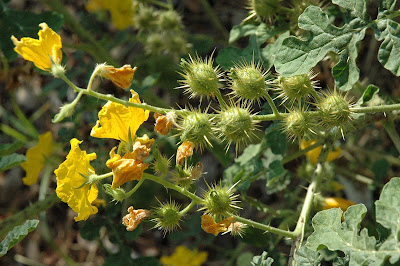
Gone to seed...that's what many plants are doing now. Like the heartleaf hibiscus (above and below).

And the blue mistflowers (above), which are attracting scores of queens and occasionally some monarchs...

The little native butterfly weed didn't bloom much its first season, but it is putting out seeds. I noticed some bugs hanging out on the plant and seed pods, which meant I had to stop and figure out what they were...

Would you believe...small mikweed bugs (Lygaeus kalmii)? Yep. Below is a phot of a group of nymphs, clinging to the inside of a seed pod.

Wondering what an adult looks like? Here's a good close up. And I found an interesting discussion on milkweed bugs here (there are two species–large and small) on a monarch website. Check it out! Hmm, should I knock mine off or let'em stay?






































